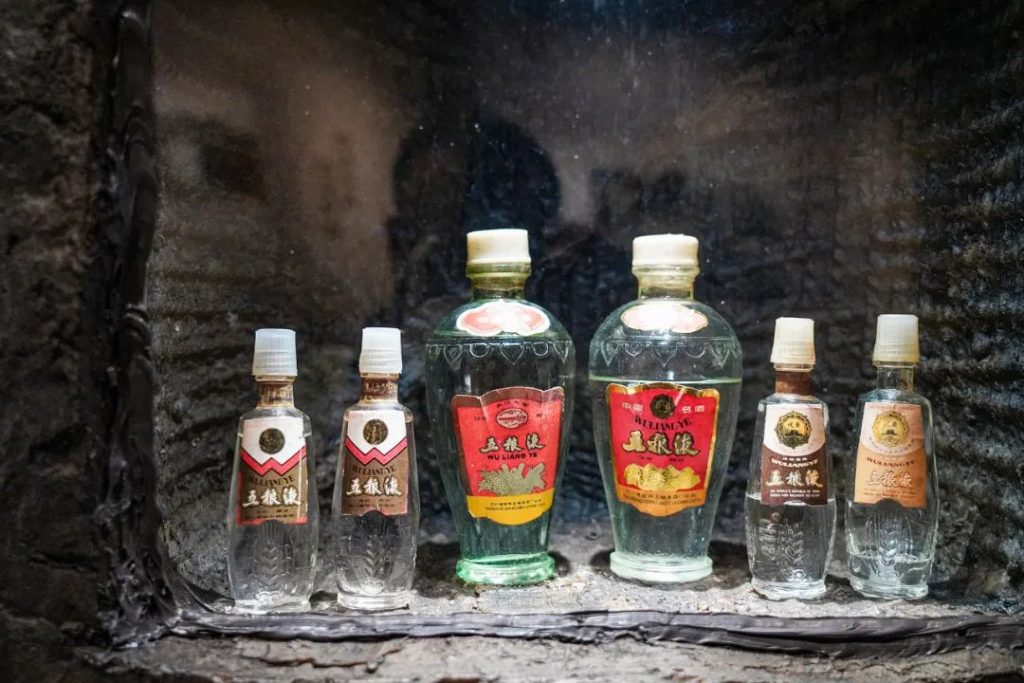
Rationalization of consumption promotes the optimization of the industry structure, and the rise of plain – bottled liquor activates new market momentum
The “shift towards low – prices” in the liquor industry is not accidental but an inevitable choice under the dual influence of the consumer market and the industry cycle. From the news, we can see that the core feature of the liquor market in 2025 is the “continuous decline of the popular price range for mid – and low – end products”. Plain – bottled liquor has become a highlight in the market as “daily – drink liquor”. Data such as the annual sales of over 10 billion yuan for Huanggai Bofen, the popularity of Luzhou Laojiao’s Heigai, and the supermarket’s own – brand liquor achieving sales of over 20 million yuan in half a year all confirm the strong vitality of this trend.
First of all, the rise of plain – bottled liquor is essentially a victory for rational consumption. In the past, the liquor industry has long relied on “face – saving consumption” and “business banquets”. The prices of high – end products included a large amount of brand premium and packaging costs. However, as consumers pay more attention to the “essential value of alcohol” (that is, the function of “making people happy”), luxurious packaging and inflated prices are gradually being abandoned. As mentioned in the news, “everyone is drinking a transparent liquid brewed from grains that cost a few hundred yuan per ton, not the luxurious packaging and face”. This change in consumer perception has promoted the market’s return from “symbolic consumption” to “functional consumption”. For the industry, this is a healthy adjustment to deflate the bubble. Leading liquor companies are actively deploying in the price range below 100 yuan (such as Wuliangye’s Mianrou Jianzhuang and Yanghe’s new plain – bottled liquor products). This is not only a quick response to market demand but also through the combination of “famous brand + low price”, it brings the mass market originally occupied by regional small factories or loose – packed liquor back into the mainstream brand system, thereby increasing the industry concentration.
Secondly, the growth of plain – bottled liquor has injected new growth momentum into the industry. The traditional liquor industry has long relied on the “simultaneous increase in volume and price” in the high – end market. However, since 2021, the prices of high – end liquor have been continuously falling (for example, the price of Feitian Moutai has dropped by nearly 45% in five years), and the price range of sub – high – end products has shifted downward. The industry’s growth engine urgently needs to be switched. Judging from the market scale of plain – bottled liquor, which reached 150 billion yuan in 2024 (with a compound annual growth rate of 17%), its growth rate far exceeds the industry average, making it a “rare bright spot”. More importantly, the consumption scenarios of plain – bottled liquor are mainly self – drinking and group – drinking, which are of a rigid – demand nature and are less affected by economic fluctuations. For example, the daily drinking needs of migrant workers in cities and low – and middle – income groups are stable. The “morning – drink culture” of dock workers has even formed a regional rigid – demand market. This “anti – cycle” consumption characteristic provides a more stable foundation for the liquor industry.
Finally, the popularization of plain – bottled liquor has promoted the optimization of the industry’s supply chain and channel innovation. In order to achieve “ultra – high cost – performance” in the price range below 100 yuan, liquor companies must compress non – essential costs such as packaging and marketing and concentrate resources on the quality of the liquor body. For example, the popularity of Auchan’s 9.9 – yuan solid – state pure – grain liquor and Hema’s “Qingxiang No. 1” is essentially due to the “removal of brand premium + direct supply from the supply chain” model, which allows consumers to obtain high – quality base liquor at a lower price. At the same time, the channel profit of plain – bottled liquor is more substantial (as mentioned by Zhongtai Securities, “the channel profit performance is excellent”), which has attracted distributors to shift from the high – end market to the mass market, promoting the extension of the channel network to sinking scenarios such as community stores and chain supermarkets and further activating terminal sales.
Multiple hidden worries are hidden in low – price competition, and the youth – oriented transformation still faces the challenge of cultural断层
Although the rise of plain – bottled liquor has brought new opportunities to the industry, the problems of low – price competition and youth – oriented transformation behind it also need to be vigilant.
First of all, low – price competition may lead to the compression of the industry’s profit margin and even trigger the risk of “bad money driving out good money”. The core selling point of the current plain – bottled liquor market is “high cost – performance”, but where is the boundary of “cost – performance”? If liquor companies reduce the quality of the base liquor (such as using liquid – state liquor instead of solid – state liquor) to lower the price or rely too much on marketing subsidies (such as the low – price strategy of supermarket own – brand products), it may damage consumers’ trust. For example, if we only emphasize the low price and ignore the quality of the “transparent liquid brewed from grains that cost a few hundred yuan per ton” mentioned in the news, plain – bottled liquor may fall into the cognitive trap of “low price = low quality”. In addition, although the participation of leading liquor companies has increased the market concentration, it has also intensified the competition. Brands such as Yanghe and Gujinggong have successively launched new plain – bottled liquor products, which may lead to the involution of “increasing volume but not increasing profit” in the price range below 100 yuan, ultimately affecting the long – term profitability of enterprises.
Secondly, the “price decline” of high – end brands may dilute brand value and weaken their moat in the high – end market. The brand value of liquor highly depends on “scarcity” and “status symbol”. Leading enterprises such as Moutai and Wuliangye have consolidated their high – end image by strictly controlling the quantity and maintaining high prices in the past. However, in recent years, the continuous decline of the price of Feitian Moutai (the channel price has fallen below 1800 yuan) and the price adjustment of high – end products such as Xijiu Junpin are essentially the result of weak demand in the high – end market. If liquor companies over – deploy low – price products for short – term sales, it may weaken consumers’ “high – end perception” of the brand. For example, although Luzhou Laojiao’s 98 – yuan “Heigai” has been popular in the short term, in the long run, how to balance the high – end positioning of the “national plain – bottled liquor” and “Guojiao 1573” remains a challenge.
Finally, the effect of the youth – oriented transformation remains to be verified, and the conflict between traditional liquor culture and the needs of the younger generation has not been fundamentally resolved. As mentioned in the news, young people “dislike the drinking – table culture”, “pursue a light – drunk state”, and “like good – tasting liquor”. However, most of the youth – oriented attempts of liquor companies remain at the levels of “lowering the alcohol content” and “packaging innovation” (such as the sales of 38 – degree Guojiao 1573 exceeding that of the high – alcohol – content version), and have not really touched the consumption scenarios and emotional needs of young people. For example, Japan’s Suntory captured the young people’s market with its “third – type beer” (low – price, low – alcohol, and sweet – flavored). Most of the youth – oriented products of Chinese liquor companies (such as Jiangxiaobai’s early “youth liquor”) failed because their taste did not meet the habits of traditional liquor consumers. More importantly, young people have extremely diverse choices for alcohol consumption (such as pre – mixed cocktails, craft beers, and fruit wines). It is difficult for liquor to form a differentiated advantage only by “lowering the alcohol content”. The view mentioned in the news that “young people will naturally drink liquor when they grow up” is essentially a misjudgment of young people’s consumption habits. Young people may never accept the “spicy taste” and “drinking – persuasion culture” of traditional liquor and instead choose alcohol categories that better meet their own needs.
Suggestions for entrepreneurs
Facing the “shift towards low – prices” and youth – oriented challenges in the liquor industry, entrepreneurs can start from the following directions:
Deeply cultivate niche scenarios and create “functional plain – bottled liquor”: The core of plain – bottled liquor is “rigid – demand self – drinking”. Entrepreneurs can develop customized products around specific consumption scenarios (such as morning drinks at construction sites, night gatherings, and family meals). For example, in response to the “morning – drink” needs of dock workers, small – bottled (100ml), high – alcohol – content (above 52 degrees), and easy – to – carry plain – bottled liquor can be launched; for young people’s “light – drunk gatherings”, low – alcohol (below 30 degrees), fruit – flavored plain – bottled liquor can be launched to enhance the “good – tasting” attribute.
Balance “low price” and “quality” and build a trust moat: Low price does not mean low quality. Entrepreneurs need to reduce costs through supply – chain optimization (such as direct procurement of grains and shortening the circulation links). At the same time, they should clearly mark information such as raw materials (such as “solid – state pure – grain brewing”) and processes (such as “fermentation in earthen jars”) to enhance consumers’ trust through transparency. For example, the success of Fat Donglai’s “Ziyou Ai” liquor relies on its “self – operation + quality commitment” model. Entrepreneurs can learn from the path of “regional chain + self – owned brand” to deeply cultivate the local market.
The youth – oriented transformation requires “breaking through the scenario” rather than “compromising on the product”: The reason why young people don’t drink liquor is essentially that they don’t accept the consumption scenarios of liquor (such as business banquets and drinking – persuasion culture). Entrepreneurs can try to integrate liquor into young people’s daily scenarios (such as camping, scripted murder games, and light dining), lower the drinking threshold through “liquor + special mixes” (such as liquor paired with fruit tea or ice cream), and at the same time weaken the label of “drinking – table culture” and emphasize the “self – indulgence” attribute. For example, Japan’s Suntory successfully attracted young people by mixing whiskey into light drinks such as “mizuwari” and “highball”, and this idea is worth learning from.
Pay attention to the hidden needs of “new consumer groups”: In addition to low – and middle – income groups and young people, the “daily self – drinking” needs of the “new middle – class” are also worth exploring. They may not pursue Moutai but are willing to pay for plain – bottled liquor with “stable quality and reasonable price”. Entrepreneurs can launch differentiated products such as “small – batch handmade brewing” and “aged base liquor” to meet the needs of this group for “quality” rather than “face”.
In general, the “shift towards low – prices” in the liquor industry is an inevitable result of rational consumption. It not only brings opportunities for market expansion but also exposes challenges such as brand – value dilution and youth – oriented transformation. Entrepreneurs need to grasp the two cores of “rigid – demand scenarios” and “quality trust”, and at the same time break out of the cultural framework of traditional liquor and use a more open – minded approach to meet the real needs of the new generation of consumers.
- Startup Commentary”Building LLMs: The Knowledge Graph Foundation Every AI Project Needs”
- Startup Commentary”The 17th Year of Tmall Double 11 and the New Map Rewritten by AI”
- Startup Commentary”How to Prepare Your Data for Artificial Intelligence”
- Startup Commentary”Small and Medium-sized Banks: “Cutting the Tail” in Loan Assistance”
- Startup Commentary”The Six AI Giants on Stage: AGI Is No Longer a “Future” Thing”





